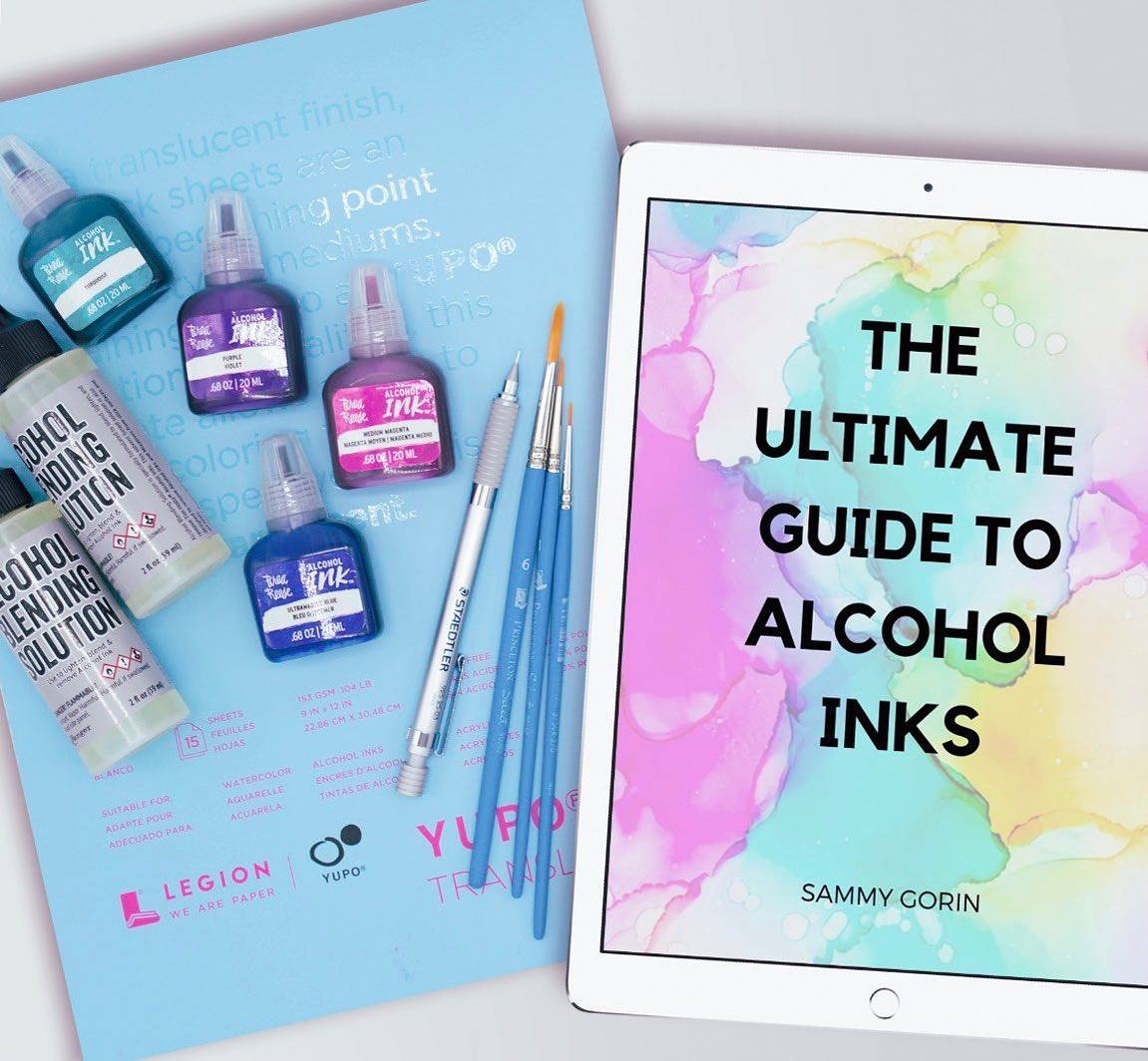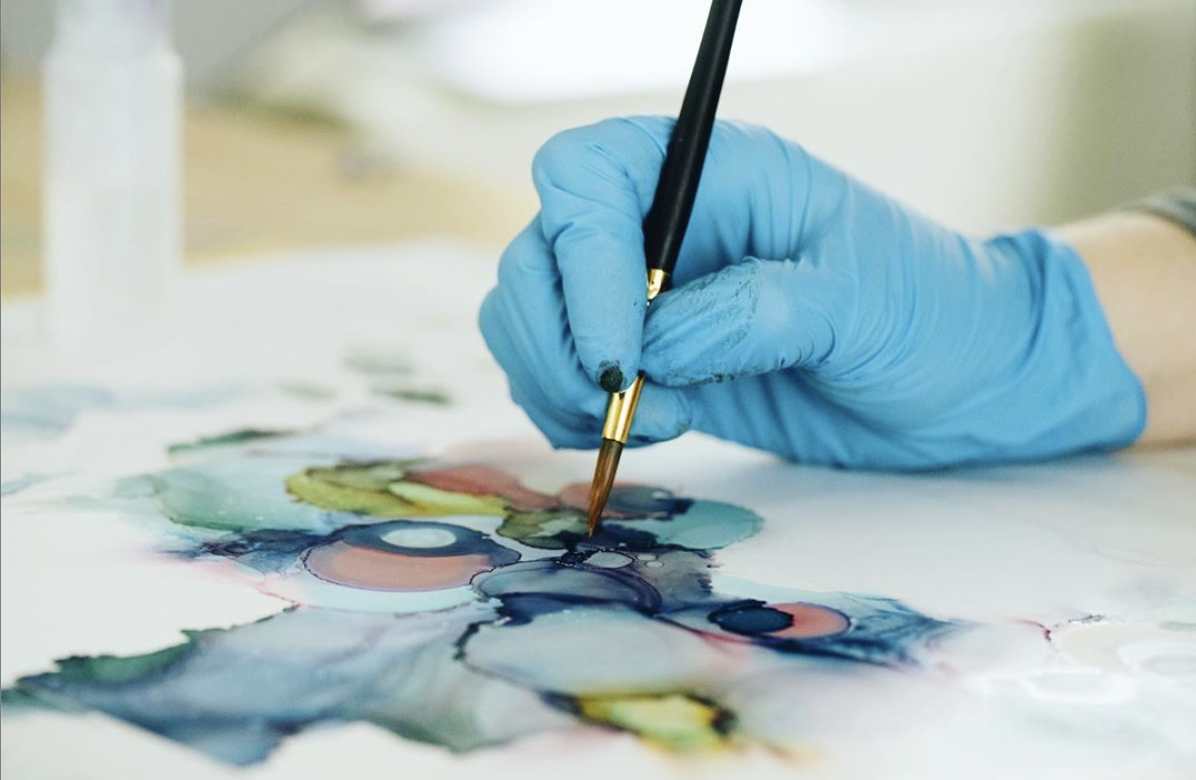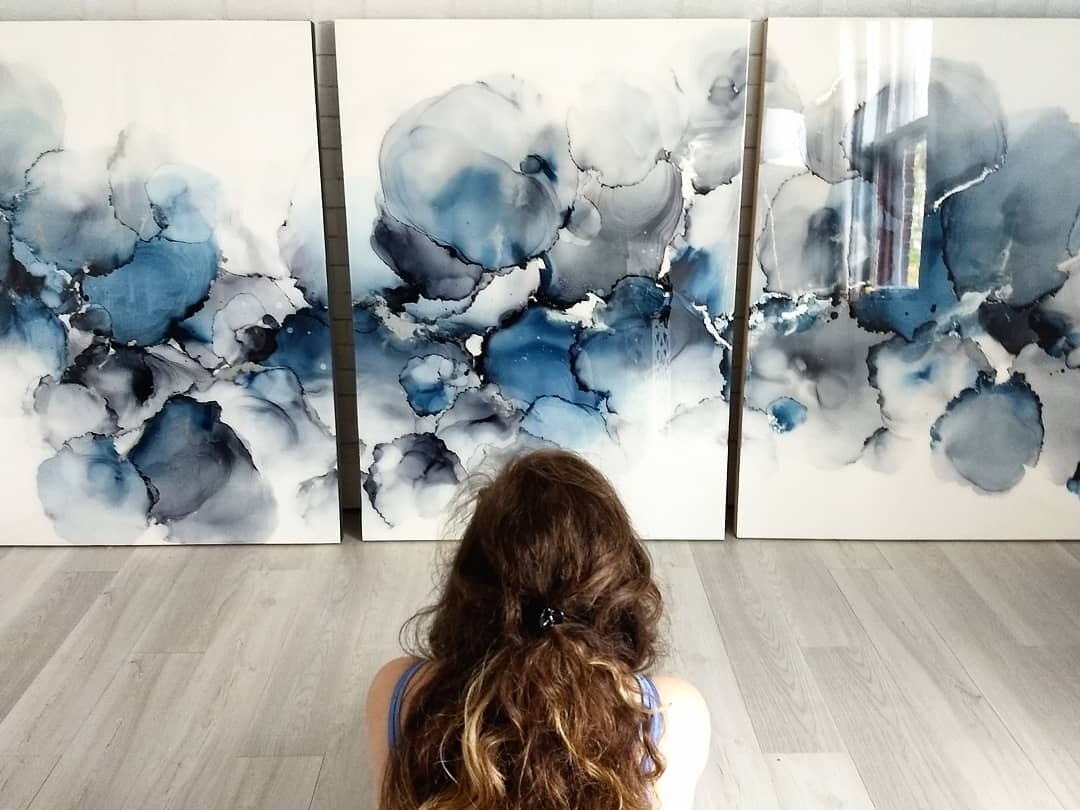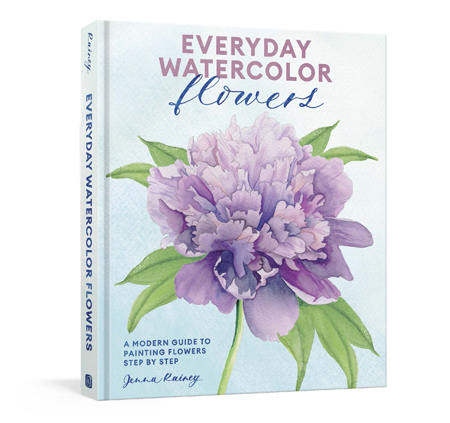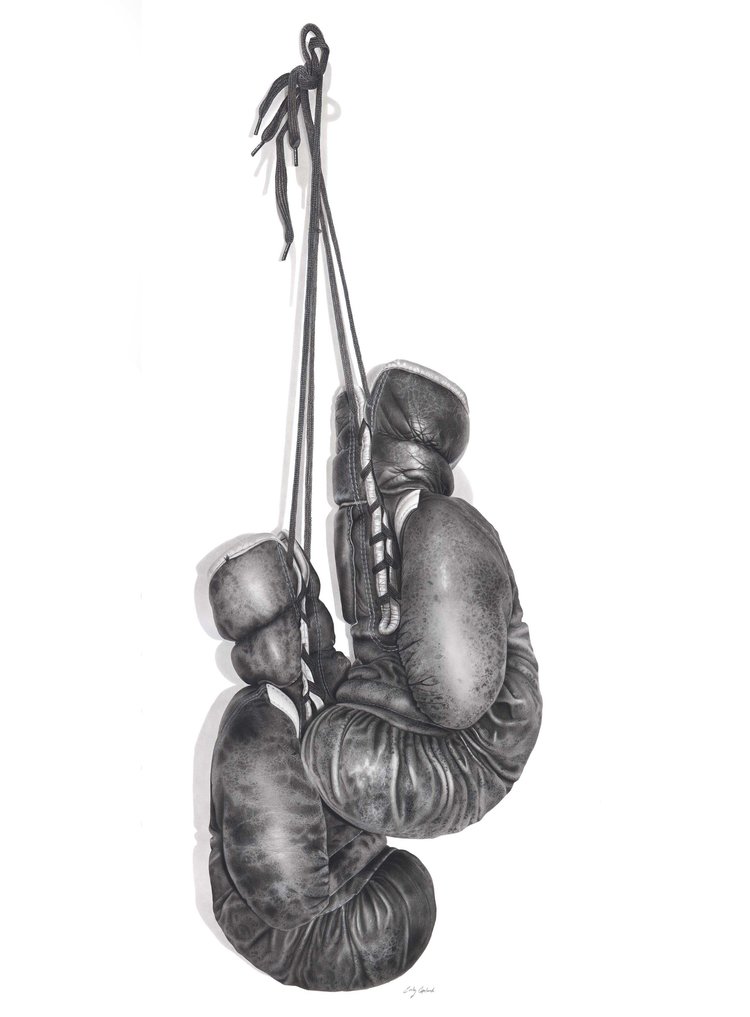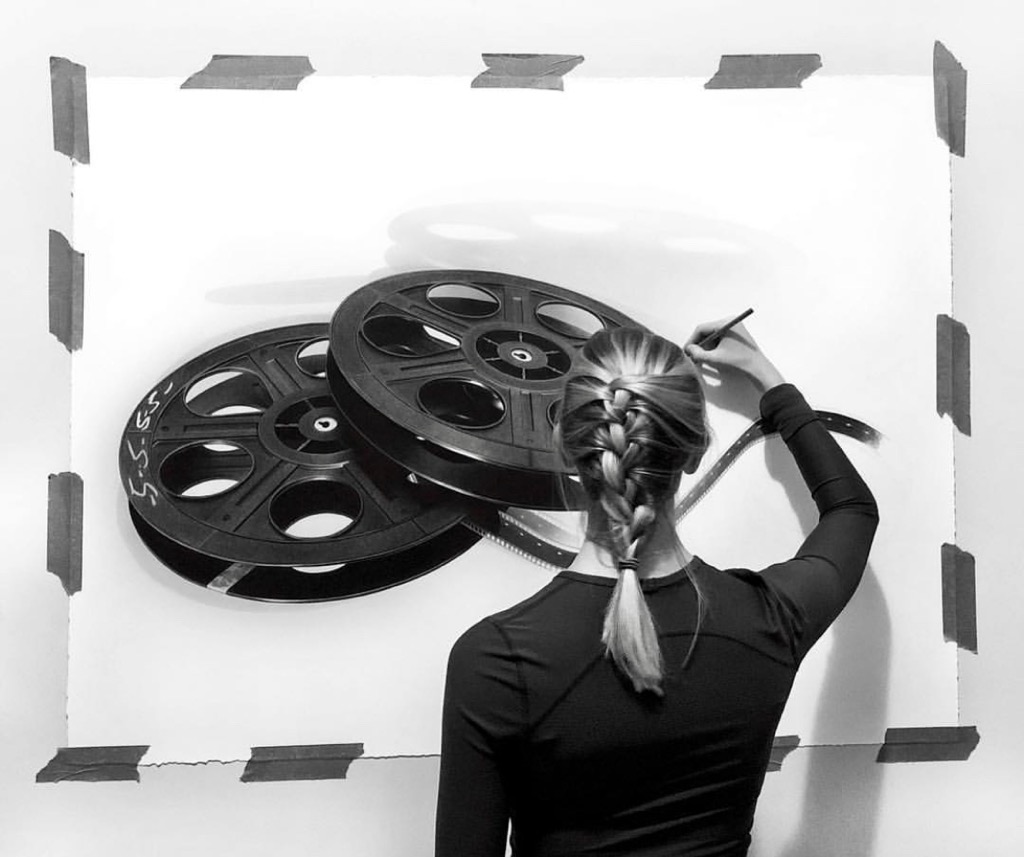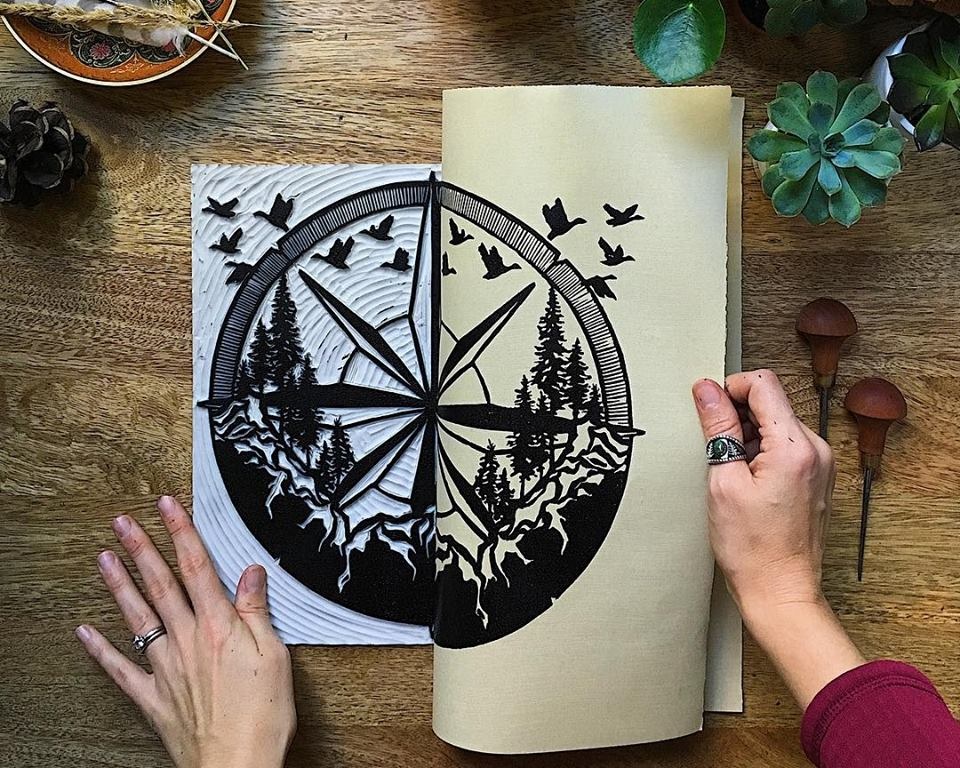FROM THE ARTISTS.
YUPO®’s unbelievable quality can transform any work of art into a masterpiece. The ultra-smooth, non-porous, and non-absorbent canvas gives artists the flexibility to work in several different mediums to achieve unique and creative results. Yet every artist exploits these advantages differently, exposing the many possibilities of YUPO® paper.
Read about different artists’ experiences and techniques using YUPO®.
Samantha Gorin, @sammygorinart
Which YUPO® is your go-to?
{Samatha Gorin} My go-to YUPO is the 9x12in "heavy" weight pads. When painting on YUPO, I usually put my finished piece in a pre-cut mat frame so that my collectors can have an easier time framing their work; the 9x12in paper makes it easy to meet standard frame sizes! The pads are also super easy to store in my apartment's makeshift studio.
Which paints do you prefer when using YUPO®?
{SG} I primarily paint with alcohol inks on YUPO. Inks are tricky; you can only use them on non-absorbent, slick surfaces, which makes YUPO an ideal substrate. I especially love using my inks on the "translucent" YUPO. Since alcohol inks are transparent, once you add a mat backing to your piece, it gives your painting the element of depth.
How did you discover YUPO®?
{SG} When I decided I wanted to learn how to paint with alcohol inks, I did a ton of research. I had never heard of them before, and they are drastically different from my primary medium, acrylic paint. While doing my research, "YUPO" was mentioned in nearly every blog and Instagram post. I did a little research and found an incredibly helpful article on Legion Paper's website. Aside from the inks, a pad of Legion's YUPO was amongst my very first ink purchase, and it's been my go-to ever since.
How do you display your finished masterpieces?
{SG} I usually put my finished work in a pre-cut mat frame, but sometimes I will mount the painting to a cradled wood panel. Once attached, I trim the edges and cover the piece in a glass-like coat of resin.
Any advice for first-time YUPO® users?
{SG} Don't be afraid to try each weight and size! At first, I was hesitant to work with the translucent YUPO, but once I gave it a shot, I fell in love. Also, different weights work best with different projects, so finding the correct weight through experimentation is key.
Ashley Mahlberg, Ink Reel Studio, @Inkreel
Which YUPO® is your go-to?
{Ashley Mahlberg} I typically use the medium weight Yupo paper on a roll. The price point fits with my material budget and I find it easier to cut/manipulate the medium paper weight. If I'm not going to cut the paper I tend to use the pre-cut heavy weight paper. As an artist where the majority of my work comes in the form of commissions I like having a roll of Yupo on hand so I can easily create custom size paintings for my clients.
Which paints do you prefer when using YUPO®?
{AM} Alcohol ink is my preferred medium to work with on Yupo. To achieve the amazing effects that are possible with alcohol ink I need a surface that won't absorb the ink and will allow the medium to move fluidly across the surface - Yupo accomplishes this goal beautifully with its super smooth nonabsorbent surface. It extends the time I have to work on a painting and not have to worry about the ink losing its fluidity due to absorption.
What’s your style of work? Why do you choose YUPO® to help accomplish your style?
{AM} I'm an abstract fluid artist, therefore working quickly to direct the flow of the alcohol ink and add effects in a short period of time is something I'm always working against. Yupo not only extends the time I have to work on a painting as it doesn't absorb the ink but sits on top of the paper this also allows me to reactivate the ink and rework a project or add effects at a later time.
How did you discover YUPO®?
{AM} I discovered Yupo a couple years ago while perusing watercolor videos on Youtube, I came across a video of an artist demonstrating how he achieved exciting effects with alcohol ink on Yupo. The next day after watching his demo I ordered Yupo, ink, and was hooked. I hadn't painted on a synthetic surface before Yupo and I was (and still am) absolutely mesmerized by the beautiful effects that I can create with Yupo and alcohol ink.
What do you do with your finished pieces?
{AM} My finished Yupo paintings are either mounted on cradled board or left loose and placed in a frame.
Any advice for first time YUPO® users?
{AM} Using a heat tool to push alcohol ink around a surface is a popular method to create the beautiful alcohol ink effects and since Yupo is synthetic you want to be careful to not apply direct heat in one area for too long as it can melt your paper. I recommend experimenting on a scrap piece of Yupo to figure out the tolerance the Yupo has when applying heat.
Marissa Recker, @astuaryart
Which YUPO® is your go-to?
{Marissa Recker} I use various Yupo products depending on the piece I am creating. I use large heavyweight sheets the most. I like how resistant they are to warping from my heat gun. I use the large medium weight rolls when I create on a larger scale. I love both products and use each often!
What paints do you use with YUPO®?
{MR} I use a few different media on Yupo. I use alcohol inks the most, but I also love using acrylic inks, spray paint, and resin on Yupo. I love how easily alcohol and acrylic inks move across the smooth surface Yupo has to offer. But, I also love that spray paint and resin both adhere to it beautifully!
What’s your style of work? Why do you choose YUPO® to help accomplish your style?
{MR} My artist style embraces the movement that comes with fluid art. Yupo is the ultimate surface to achieve this because it is so smooth and non porous. Inks move across Yupo so beautifully. I also love that it is easy to pick up a corner of the paper to move inks across the surface.
How did you discover YUPO®? what was your first experience with it like?
{MR} I discovered Yupo through Legion being an early supporter of my work on Instagram. I remember seeing them like one of my earlier posts almost two years ago and immediately thought they must be a good company with great paper!
What do you do with your finished pieces?
{MR} I mount most of my pieces to wood panels and then seal them in resin. It creates a great display piece with a beautiful finish!
Any advice for first time YUPO® users?
{MR} My advice to a first time Yupo user is if you are using heat (like a heat gun) I recommend starting with the heavy weight Yupo. I found that it was much more forgiving as I learned how to use my heat gun. Once I was more experienced I was able to move onto the medium weight. Also, don't forget if you want to start your piece over, just flip the Yupo over and work on the back! You get a free redo with Yupo. And of course, have fun!

